Best
Beginner Oboe
-
Overall: ABS resin body provides enhanced durability and a wood-like sound
-
Best Feature: Silver-plated keys are fluid and responsive
-
TedScore™: 8/10
Best
Overall Oboe
-
Overall: A full conservatory key system with silver-plated keys
-
Best Feature: Stainless steel arbors and wire springs and Teflon-tipped stainless steel adjusting screws
-
TedScore™: 10/10
Best
Intermediate Oboe
-
Overall: Premium grenadilla body and bell
-
Best Feature: All cork keys and metal tenon joints
-
TedScore™: 9/10
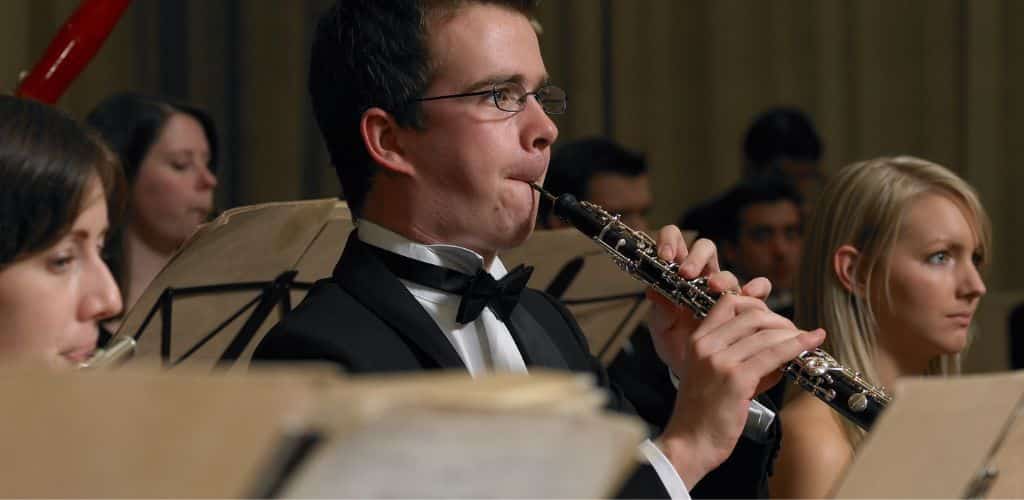
Ever wondered what clef the oboe uses? You’ll discover it now, and trust me, it’s a piece of cake!
The oboe, with its sweet sound, is written in the treble clef, just like other high-pitched woodwind instruments.
As an oboe player, I highly recommend exploring its music—you’ll love it! So, listen and pay attention as we discover this special double-reed instrument.
Stay with me, and let’s learn about the oboe’s musical notation together; it will be great!
Oboe and Musical Notation
Reading sheet music for the oboe is like solving a fun puzzle designed for music lovers. It’s about learning how the treble clef matches the oboe’s wide and dynamic range.
Reading Oboe Sheet Music
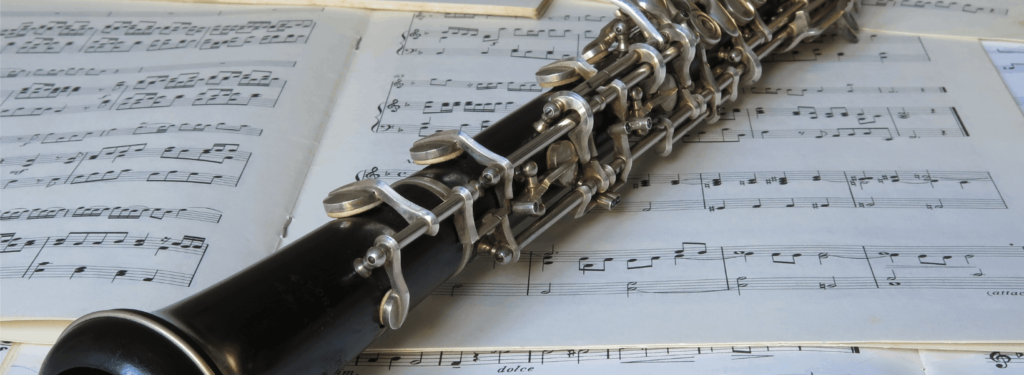
I always find a sense of ease knowing that my oboe’s sheet music is written in the treble clef. This squiggly symbol curls around the G line, telling me exactly where my musical journey starts.
Each line and space represents a different pitch, with the lines from bottom to top being E, G, B, D, and F, and I remember the spaces with the mnemonic “FACE”. It’s like giving each pitch its comfy chair in a five-level musical theatre—everyone’s got the best seat!
Oboe Range and Clefs
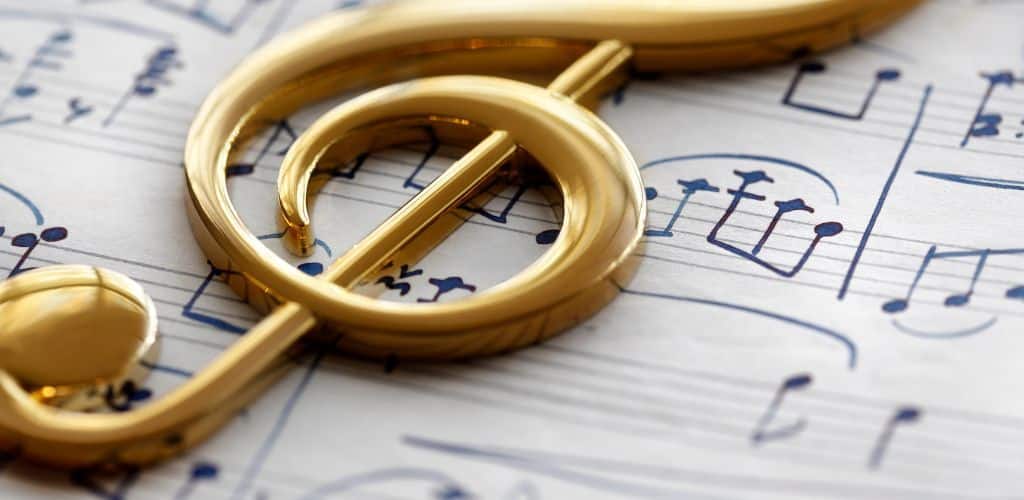
Now, here’s the exciting bit about my oboe: it has a range that usually spans from B3 to G6. That’s quite the vocal stretch!
Its home is the treble clef, but sometimes, we might tip-toe into the tenor clef for those low whispers that tease the edge of its range. However, most oboe music sticks to the treble clef, where our bright and poignant voice shines.
Each note I play falls within this space, so mastering the treble clef is critical to making my oboe sing its brilliant solo or blend into an orchestral piece.
Playing Techniques and Sounds
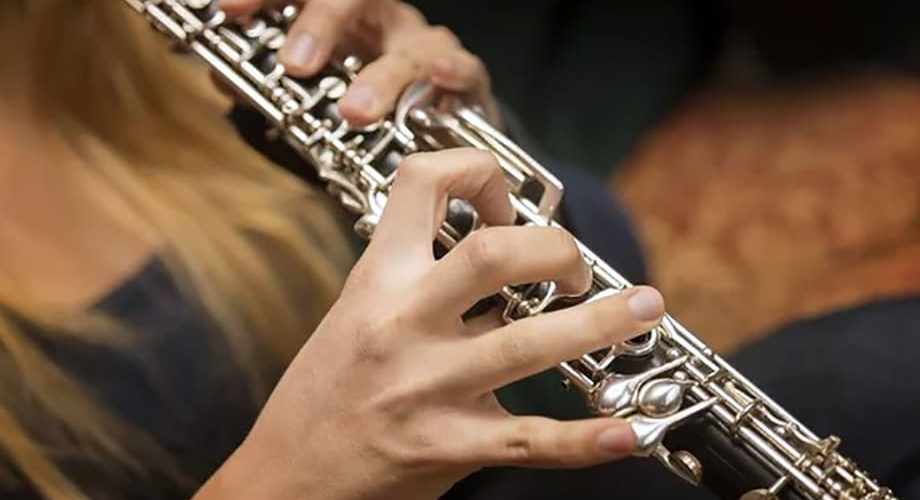
Mastering technique is crucial in the beautiful world of the oboe, and creating the perfect tone is like finding a hidden treasure. When done right, it brings the player and listener joy.
Producing the Right Tone
The oboe sings in my hands only when I give it the desired breath. It’s a delicate dance between my lungs and the reed’s whimsy.
Here’s a bit of a secret: the right tone begins with the reed; it must be soaked to vibrate with zest and zeal. The warmth of my breath then coaxes it into singing, drawing a rich and creamy sound from which only the oboe can produce.
Finessing the embouchure is my next move.
I’ve found the sweet spot where my lips and facial muscles grip the reed, not too tight or loose.
With this, I conjure the oboe’s distinctive, expressive timbre that carries through concert halls with a serene yet authoritative whisper.

Advanced Playing Techniques

Advancing my oboe technique, I sometimes feel like a magician revealing hidden tricks. I employ harmonics, flutter-tonguing, and multi-phonics to elevate music to a sublime experience.
Playing the high notes, like the elusive E-flat in ‘Promenade,’ sometimes requires a unique fingering, one whispered down through generations of oboists.
At other moments, I revel in the oboe’s dynamic range, allowing me to be as gentle as a breeze or as forceful as a tempest. It’s all about precision and the slightest of tweaks.
It’s the intricate dance of fingers, breath, and emotion that turns the oboe into a conduit for music so deeply expressive that it could tell my life story without uttering a single word.
The Oboe in Ensembles
In many experiences playing with groups, I’ve found the oboe a solo instrument. Its clear and robust sound stands out in an orchestra and works well in different types of music.
Orchestral Use
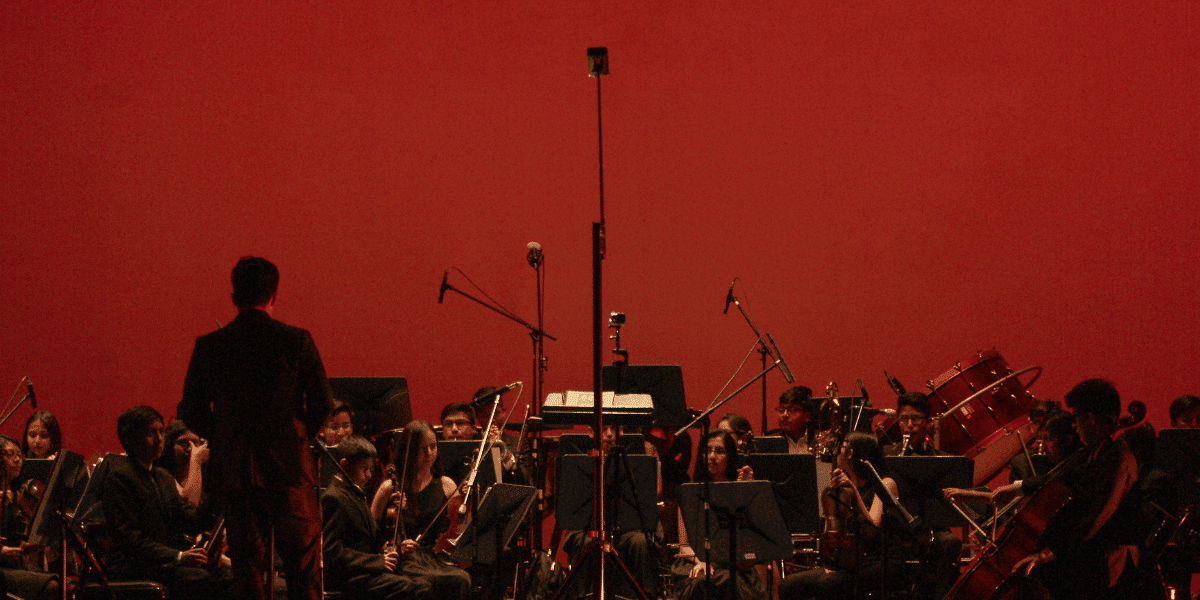
I’ve witnessed the oboe often being looked upon as an anchor in an orchestra. Its pitch is reliable, so it’s no surprise that the oboe traditionally gives the A for tuning purposes.
Classical music leans heavily on the oboe, with composers penning some rather show-stopping solos embedded in larger orchestral works. The classical oboe adds a poignant and lyrical quality to the orchestral tapestry, balancing its distinct timbre with the strings, brass, and other woodwinds.
Chamber Music and Solo Performances
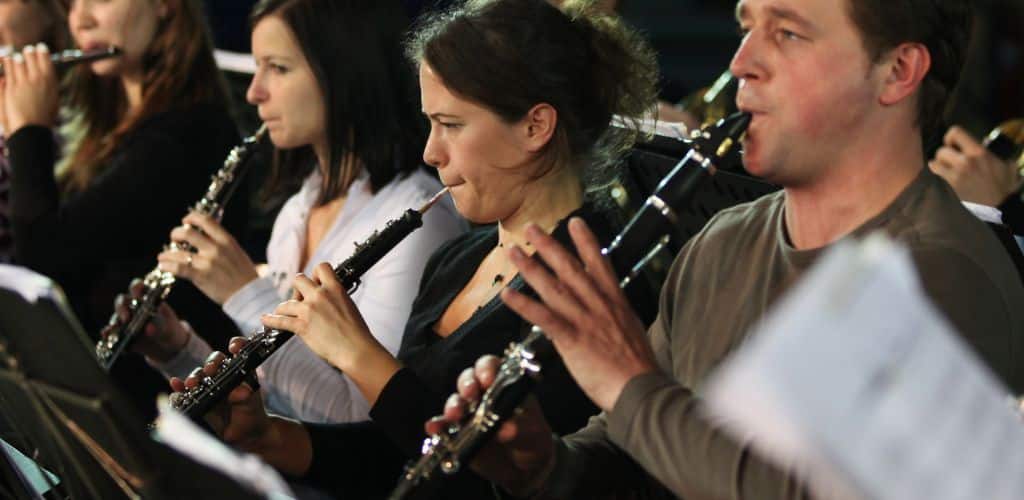
When it comes to chamber music, the oboe dives in with a spirit of collaboration. Its expressive tone makes it a perfect fit for intimate gatherings of musicians where every note counts.
Solo oboe performances are breathtaking showcases of the oboist’s prowess. The repertoire includes pieces by stalwarts such as Mozart and Vaughan Williams, providing a kaleidoscope of demanding yet rewarding works for any oboist worth their reeds.
Oboe in Other Musical Genres
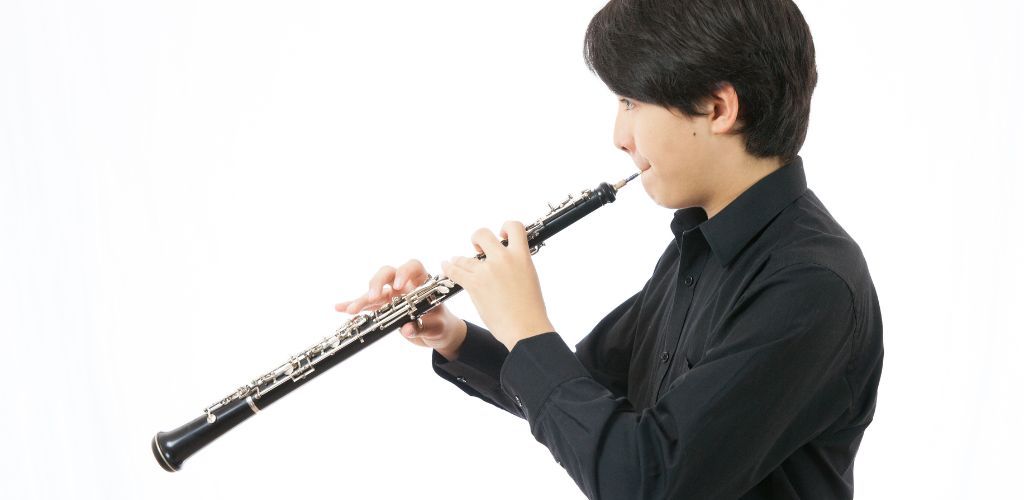
But it’s not all about classical music! The oboe transforms from its traditional role and jazzes things up in jazz ensembles. It’s quite a sight to see the oboe sway to the concert pitch.
Even military bands have a place for the oboe, where its sound slices through the air, clear and authoritative. This versatility across genres keeps the oboe fresh and a joy for musicians and listeners alike.
Caring for Your Oboe

I love sharing my experiences with my oboe, and let me tell you, proper care is vital to its sweet, melodic voice.
I’ll walk you through some nifty tips and tricks to keep your oboe in tip-top shape and choose reeds to make your performances shine.
Maintenance Tips

When I first got my oboe, I learned it demands some pampering to stay at the top of its game.
That means a regular maintenance routine after each use.
I carefully wipe out moisture with a soft, lint-free cloth because a damp oboe is no friend to those intricate keys.
It’s essential to avoid extreme temperatures, especially the cold.
I remember once when I didn’t let my oboe acclimate to room temperature before playing – it wasn’t happy, I can tell you! So, I always give it time to warm up to the room, just like you’d warm up your fingers before a brisk walk in December.
Choosing the Right Reeds
Picking the proper reeds for your oboe can feel like selecting the best chocolate from the box – exciting yet crucial.
It’s all about finding that perfect balance of strength and flexibility. I always look for reeds made of the finest cane, which can make or break your sound.
Trust me; your reed and your oboe need to be looked after. That’s why I keep mine in a specialty case that holds them securely so they don’t get jostled around.
Oboe Brands Recommendation
Fox Tristan
The Fox Tristan English horn is a professional-grade instrument made of select maple and finished like a professional bassoon. It is renowned for its depth and resonance, offering a rich and expressive sound.
Fox Tristan Model 580 Professional English Horn with Full Conservatory System
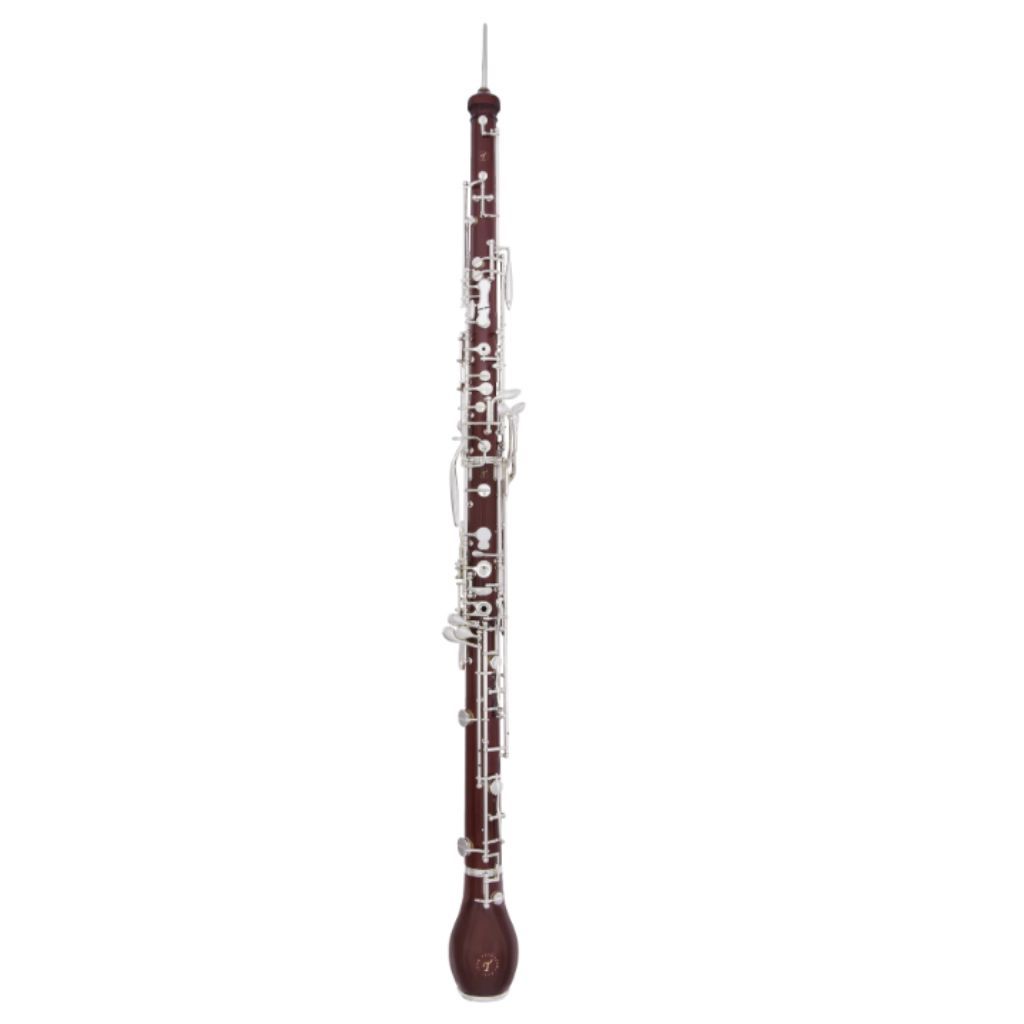
FEATURES: A full conservatory key system with silver-plated keys
OTHER INFO: Stainless steel arbors and wire springs and Teflon-tipped stainless steel adjusting screws
- Comes with a professional-quality case, two XL bocals, aluminum tenon caps, a 3-reed case, silk swab, screwdriver, and cork grease
- None
When you click ‘Check Price’, you’ll see there are loads of great places to buy this item. Our personal favorite is Sweetwater for the US, and Thomann and Gear4Music for the UK & Europe.
They are the largest music retailers, with excellent customer service, competitive prices, really fast shipping, and the longest guarantees.
The professional musician who wrote this article combined many things,
from the product build, manufacturer’s reputation through to feedback
from other users, to create our famous TedScore™.
Yamaha
The Yamaha oboe, known for its high-quality craftsmanship and precision, offers a clear sound quality and superb intonation. Yamaha oboes are designed to focus on stability and accuracy in the bore, making them a popular choice among musicians for their reliable performance and exceptional sound.
Yamaha YOB-441IIT Intermediate Oboe

FEATURES: Premium grenadilla body and bell
OTHER INFO: All cork keys and metal tenon joints
- Includes a Yamaha OBC-430II case and OBB-430II cover
- It is priced higher compared to some other intermediate oboe models
When you click ‘Check Price’, you’ll see there are loads of great places to buy this item. Our personal favorite is Sweetwater for the US, and Thomann and Gear4Music for the UK & Europe.
They are the largest music retailers, with excellent customer service, competitive prices, really fast shipping, and the longest guarantees.
The professional musician who wrote this article combined many things,
from the product build, manufacturer’s reputation through to feedback
from other users, to create our famous TedScore™.
Jupiter
Jupiter oboes are recognized for their durable construction and responsive playability, making them popular for students and advancing players.
Jupiter JOB1000 Student Oboe Modified Conservatory System
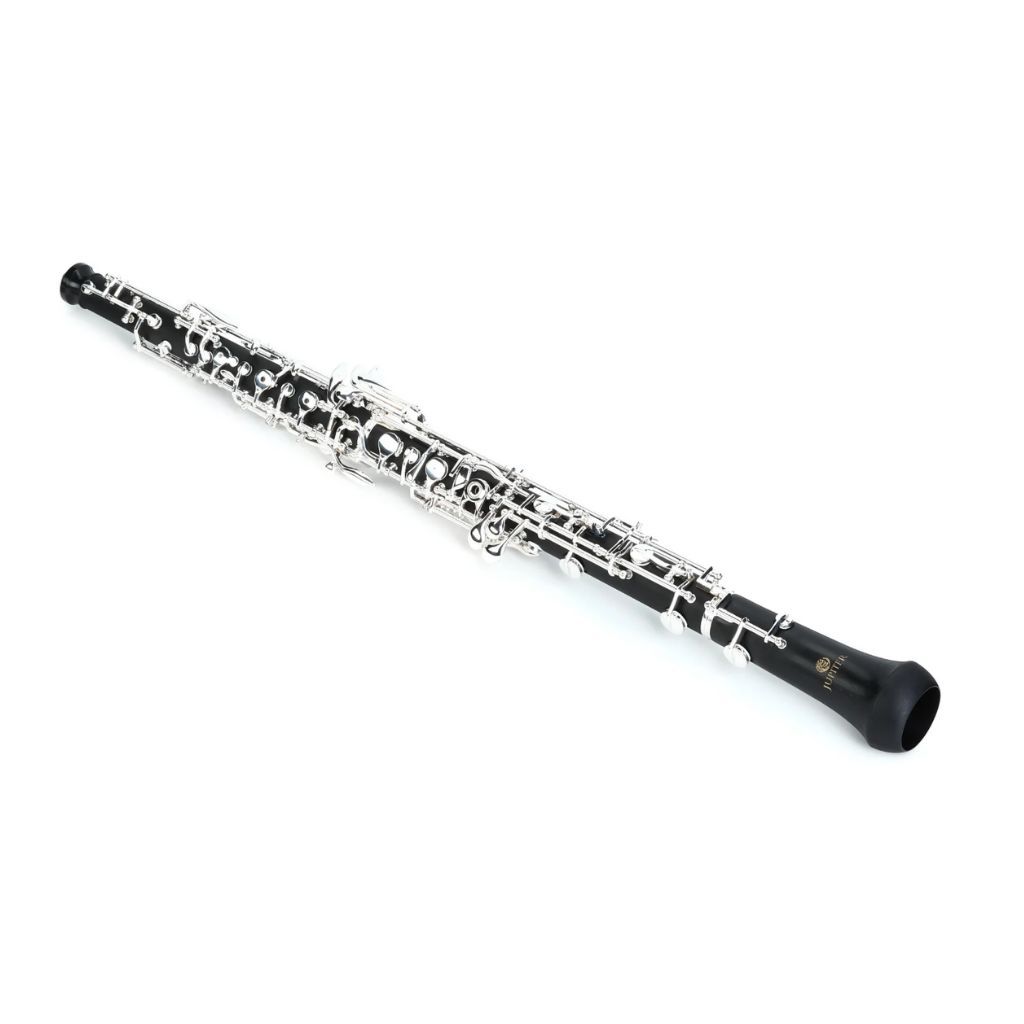
FEATURES: ABS resin body provides enhanced durability and a wood-like sound
OTHER INFO: Silver-plated keys are fluid and responsive
- Includes a lightweight ABS molded carrying case
- Modified conservatory system limiting in terms of key work customization and flexibility
When you click ‘Check Price’, you’ll see there are loads of great places to buy this item. Our personal favorite is Sweetwater for the US, and Thomann and Gear4Music for the UK & Europe.
They are the largest music retailers, with excellent customer service, competitive prices, really fast shipping, and the longest guarantees.
The professional musician who wrote this article combined many things,
from the product build, manufacturer’s reputation through to feedback
from other users, to create our famous TedScore™.
Understanding the Oboe
History and Evolution

The transition to the modern oboe, or hautbois as the French call it, occurred in the mid-17th century, providing a softer and more refined tone suitable for indoor orchestral settings.
The Viennese oboe, known for its sweet and mellow tone, was often used in orchestras during the Baroque era to play the basso continuo part.
In a double concerto, the double bass often takes on a prominent role, showcasing its versatility and depth of sound. Instrument maker played a crucial role in crafting the Viennese oboe and double bass, ensuring the instruments met the highest standards of quality and tonal characteristics.
Types of Oboes
I find oboes particularly fascinating because they come in different types!
The oboe d’amore pitched a minor third lower than the standard oboe and is adored for its sweet and mellow character.
The soprano oboe is the quintessential voice in the choir of oboes, usually crafted from rich woods like grenadilla. It defines the high pitch and bright sound we commonly associate with the oboe family.
The cor anglais, or English horn, bears a mellower tone, a curved tube, and a bulbous bell. It’s like a warm hug for the ears!
The piccolo oboe, the smaller and higher-pitched of the bunch, sounds delightfully vibrant, just like its name suggests.
The bass oboe or baritone oboe plays the low notes with gusto – it’s like the bass guitarist in a rock band keeping the rhythm solid.
The heckelphone steps an octave below the English horn, bringing a rich, deep melody fit for an epic soundtrack.
The musette with its E flat pitch is the tiny one of the family, like a little sibling that still manages to be heard loud and clear.
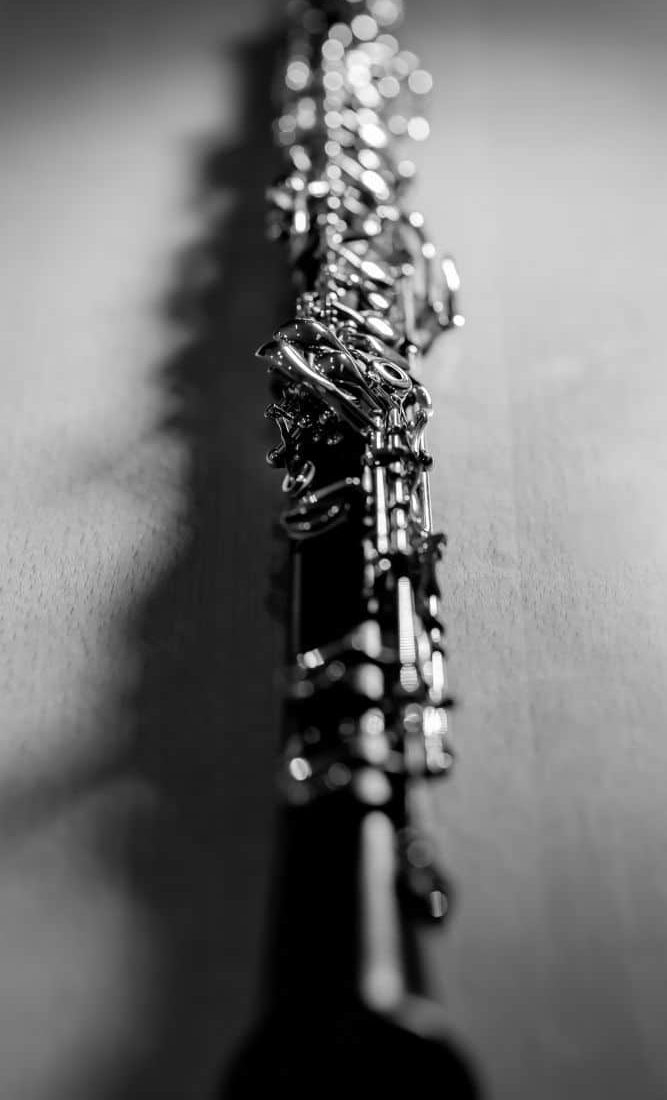
Oboe Anatomy

An oboe is like a well-designed puzzle where every piece fits just right.
It has three main parts: the upper section, the lower section, and the bell. These parts join forces via cork-covered tenons for a seamless connection.
Such precise fitting is crucial, as even a hair’s breadth misalignment can affect the melodious voice of the oboe I find so charming.
What Clef does the Oboe use:
Recap
When playing my oboe, I always read from the treble clef. It’s a bit like a trusty friend who never lets me down.
On the stave, the swirls and curls of the treble clef feel like a dance, guiding my fingers to the right notes.
All my concert C’s match the pianos, which is pretty fab because I’m in the key of C. I love that there’s no need to transpose; what I see is what I get—It’s quite a relief for my brain.
Sometimes, I like to think of the treble clef as a map of musical treasure. Each line and space tells me where to find the notes that turn dots on a page into soul-stirring music—It’s a bit magical!
So, tuning in and playing with others is a breeze. I enjoy fitting my notes into the beautiful tapestry of orchestral harmony. It’s like we’re all part of a grand conversation without saying a word—just music speaking.
Before you go…
Check out this article on the best beginner oboes. It provides valuable insights and guidance for those looking to start their oboe journey.
FAQ's
The oboe primarily uses the treble clef for notation, but it can also use the bass clef for lower-pitched passages.
Yes, the standard oboe is considered a C instrument, meaning that when a player plays one, the sound produced is a concert-pitched C.
The flute and oboe typically use the same treble clef for notation. However, the oboe can also use the bass clef for lower-pitched passages.
The oboe staff primarily uses the treble clef for notation, but it can also utilize the bass clef for lower-pitched passages.



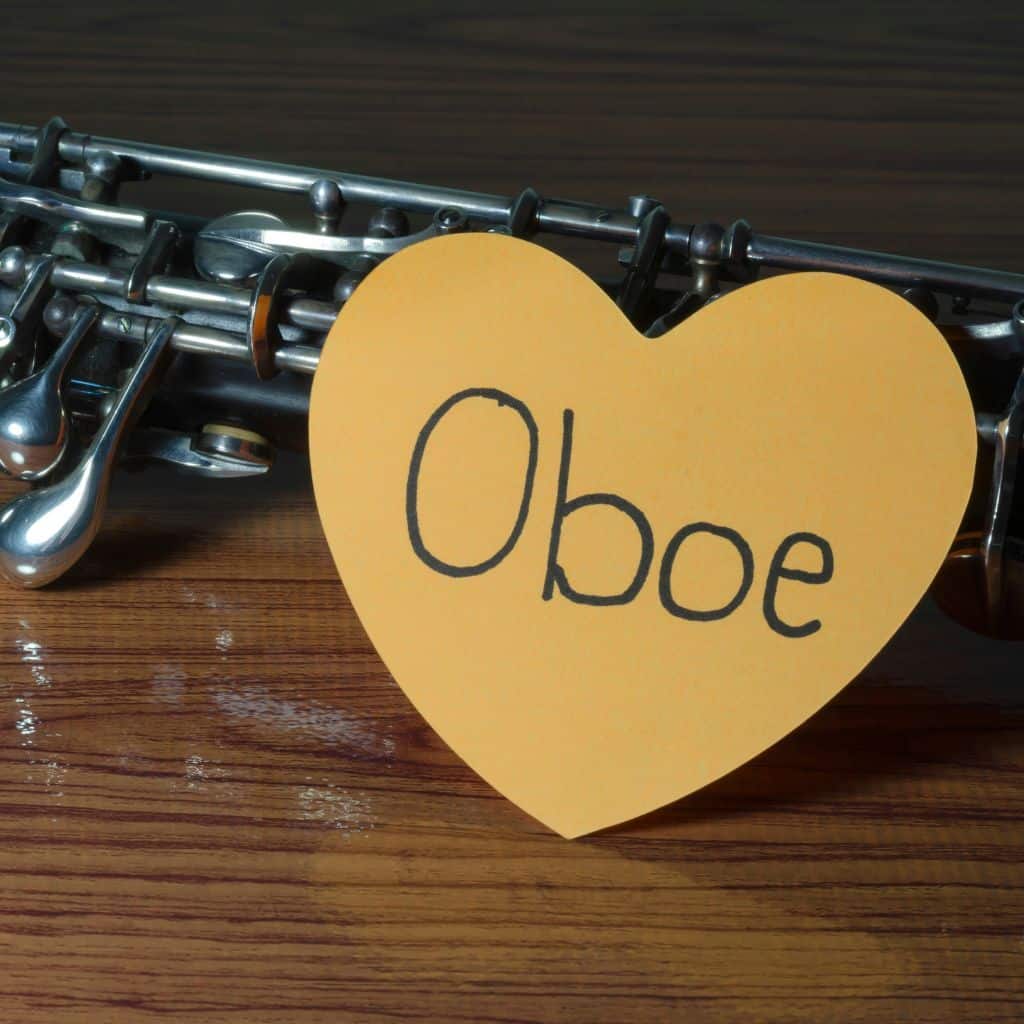
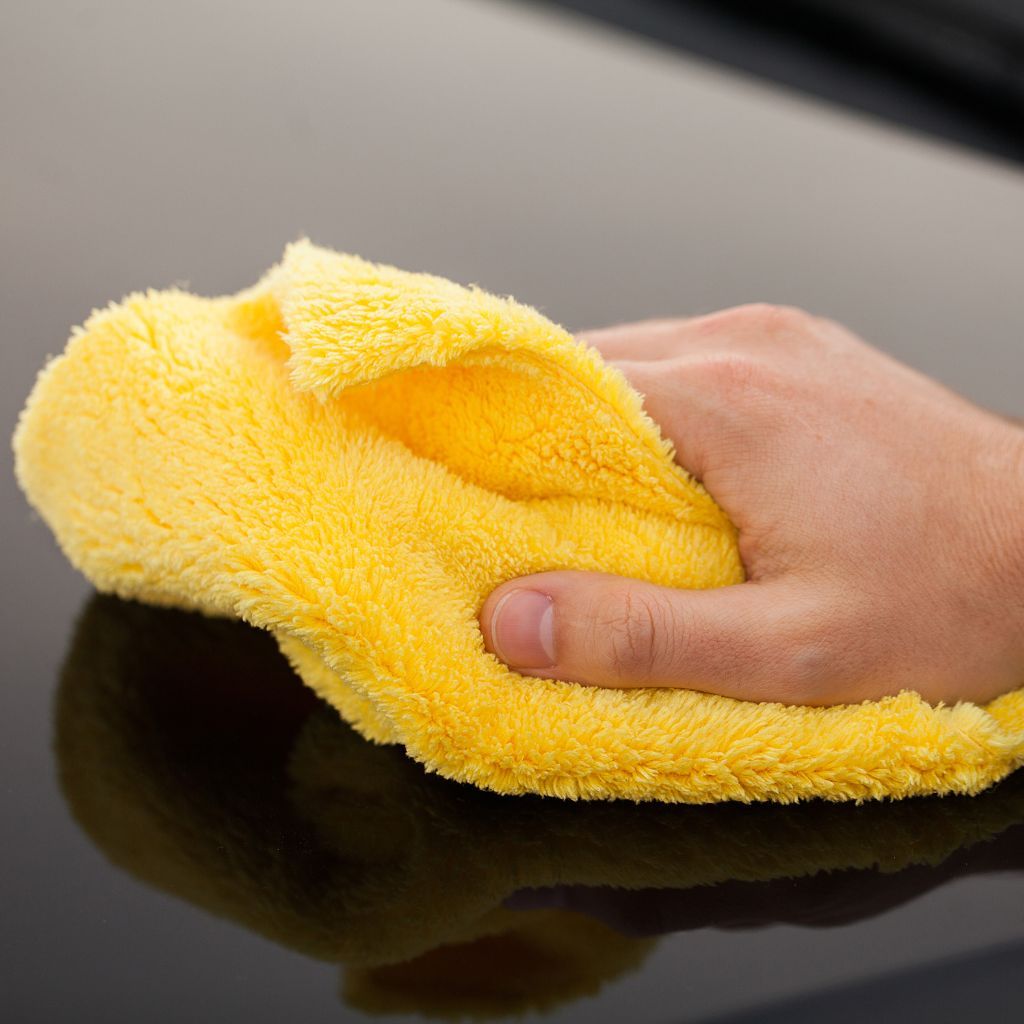








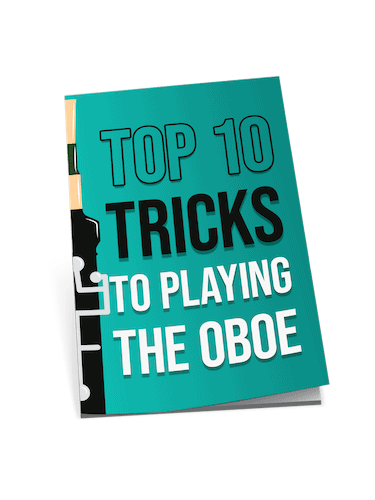
While the article precisely captures the essence and techniques of oboe playing, it slightly overlooks the historical significance of key developments in oboe manufacturing. For instance, the introduction of conservatoire system oboes was a pivotal moment. This system, widely adopted in Europe, significantly altered the instrument’s playing capabilities and tonal qualities. An in-depth comparison between the different systems used around the world, including the Viennese and German systems, could provide readers with a more comprehensive understanding of the oboe’s versatility and adaptability across various musical genres and periods.
playing the oboe in jazz bands is an underrated skill not gonna lie. found the part about oboe in other musical genres eye-opening. never thought much of it beyond classical settings. props to Katie for putting this out there, makes me wanna try more unconventional stuff with my oboe
Right?! Adding an oboe to a jazz ensemble could bring such a unique sound. Gotta experiment with this idea.
Can anyone explain how the oboe range affects what music I can play? Still trying to get the hang of reading music for this instrument.
Really appreciated the section on choosing the right reeds, made a huge difference for me. Cheers, Katie Bennington!